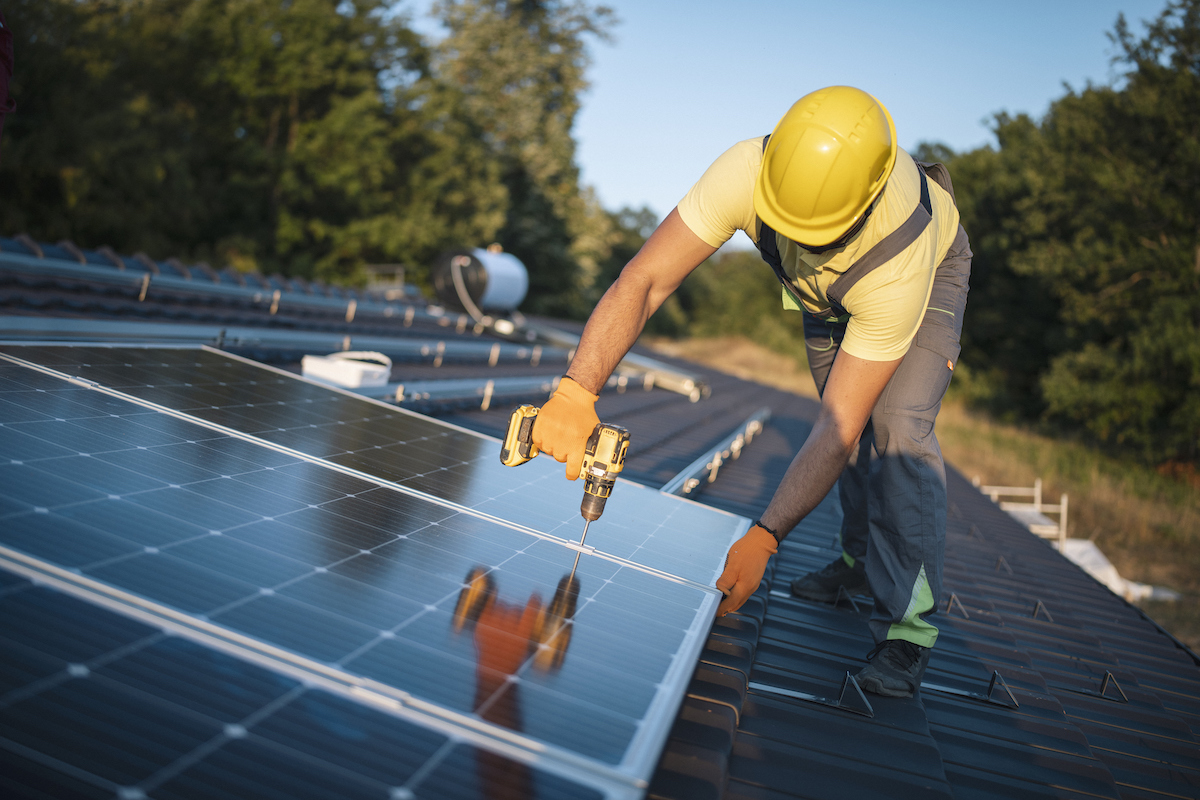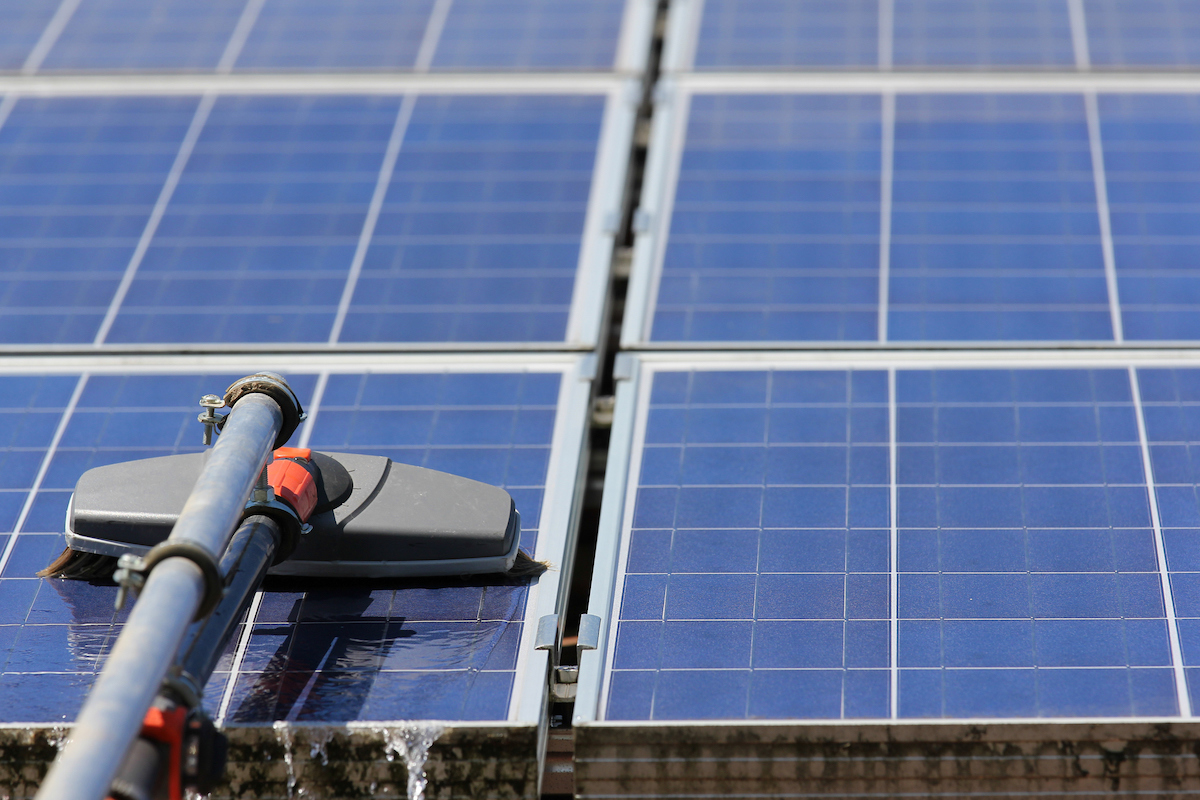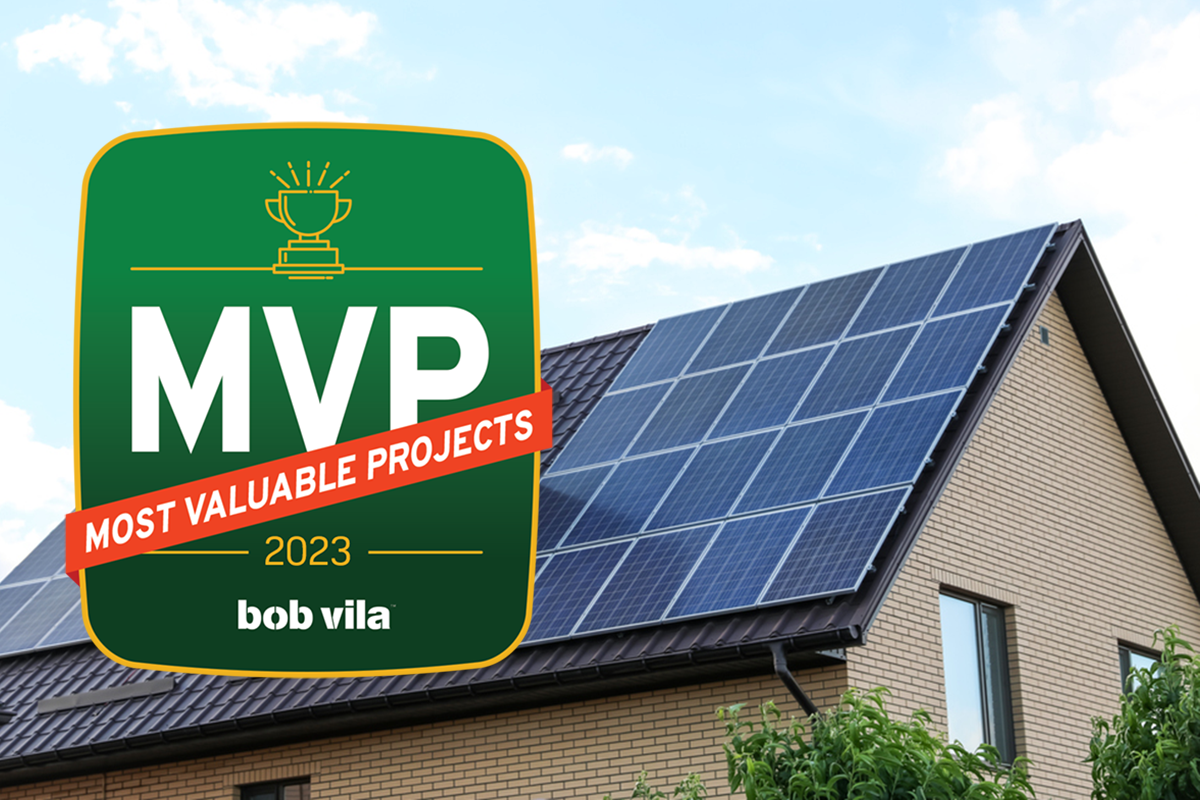We may earn revenue from the products available on this page and participate in affiliate programs. Learn More ›
This is the third installment of Bob Vila’s Most Valuable Projects of 2023, a month-long series featuring high-ROI home improvements on energy efficiency, sustainable kitchens, rooftop solar, and emergency preparedness. Each week, we’re pulling from our vast library of informational content, vetted shopping guides, and connections to industry professionals to present primers on the top projects to take on this year.
While solar panels have for years offered a way for homeowners to decrease their electric bill by harnessing the sun’s energy, the upfront cost of installing them has always been hard to swallow. Now, with the federal government and utility companies offering more tax credits and rebates than ever for clean energy sources, there truly hasn’t been a better time to make the leap to rooftop solar.
Thanks to the Inflation Reduction Act of 2022, you can take a 30 percent tax credit on the installation of new solar panels through 2033 with no maximum on the amount claimed, according to the IRS. Many utility companies also offer thousands of dollars in rebates for solar panel installation.
Solar panels also offer a solid return on investment (ROI). Homes with solar energy systems sell for an average of 4.1 percent more, according to Zillow. And, let’s not forget about the savings you’ll reap in energy costs. Depending on how much sun you receive and your utility rate, you can save $650 to $1,500 or more in annual utility costs by adding solar power. You can even sell energy back to your utility company on sunny days when you generate more than you use, further adding value to your investment.
The following how-to guides, cost estimates, and product reviews will help you nail down whether upgrading to a cleaner energy source is right for your home—and how to get started.
Solar Panels

A big part of adding solar to your home is determining the type and number of solar panels you need. While the sales reps with the best solar panel companies (such as SunPower or ADT Solar) will be happy to make those calculations for you, it’s not a bad idea to educate yourself, so you can make sure your home gets what it needs.
You’ll need to consider the amount of energy you use each year, the wattage of each panel, and the number of sunny days you have. You should also keep in mind that solar panels aren’t your only rooftop solar options. Solar shingles are an alternative to panels that better blend with your roof and can be more cost effective than panels. Once you’ve determined the number of panels (or shingles) you need, you can tally how much you can expect to spend to install those panels.
Since there are many solar panel dealers, you’ll also want to vet the various solar providers to identify which company best meets your needs. Consult the articles below to help you through the process of sizing and pricing a rooftop solar system.
MORE ON SOLAR PANELS:
➤ How Many Solar Panels Do You Need to Power a House?
➤ The Average Cost of Solar Panels
➤ The Best Solar Companies of 2023
➤ The Average Cost to Install Solar Shingles
Maximizing Solar Energy

If you’re going to invest in solar panels, then you’ll want to make sure you get the most out of them. Consider how certain factors might affect their performance, including the direction the roof faces and any trees or buildings that may create shade over the panels. Plan on hiring a service to clean your panels annually to ensure they stay in tip-top working condition. You’ll also want to figure out if it makes more financial sense for you to buy or lease the solar panels, and how your new solar panels will impact the resale value of your home.
Finally, to get the most out of your solar panels, contact your utility company to see if they offer a net metering program through which they’ll pay you for any excess energy you generate via your solar panels.
MORE ON MAXIMIZING SOLAR POWER:
➤ How to Clean Rooftop Solar Panels
➤ The Best Solar Panel Cleaning Services of 2023
➤ 8 Things to Know Before Buying a House With Solar Panels
➤ How to Use Solar Panels to Charge an Electric Vehicle
Electrical Panel and Wiring

Most people think about the price of the panels and installation when tallying up the cost of adding solar and forget to consider that their home’s electrical panel may not be up to snuff. If you have an electrical panel that uses fuses as opposed to breakers, doesn’t have enough amperage to support the new solar panels, or lacks the space to accommodate the new solar circuits, you’ll need to upgrade it in order to add solar. Another thing to consider is switching from gas to electric appliances, which might require you to expand the number of circuits in your electrical panel.
While upgrading your electrical panel is an additional expense that adds between $1,000 and $4,000 to your rooftop solar project, it will make your house more appealing when it’s time to sell. Plus, if you perform the upgrade as part of your solar panel installation, you can use Inflation Reduction Act tax credits to help pay for it.
MORE ON ELECTRICAL PANELS AND WIRING:
➤ 8 Warning Signs of Dangerously Outdated Electrical Wiring
➤ The Average Cost to Replace an Electrical Panel
➤ The Average Cost to Rewire a House
Other Clean Energy Sources

Solar energy isn’t the only alternative clean energy source you can use to power your home. Depending on your needs and where you live, there are other options you can consider. Home wind turbines are a viable energy source for those who live in rural areas that see high average monthly wind speeds of at least 10 miles per hour. Though still in their infancy when it comes to powering residential homes, fuel cells could eventually be a viable renewable energy option. This clean technology generates power through a chemical reaction, is about twice as efficient as energy produced by traditional coal and natural gas power plants, and produces zero emissions. Both wind turbines and fuel cells also qualify for residential clean energy tax credits.
If you’re looking for reliable and clean backup power, you can purchase portable power stations as an alternative to gas-burning generators. These clean energy sources use rechargeable batteries to keep refrigerators, personal electronics, and even a window air conditioning unit up and running in the event of a power outage. Check out the following articles and guides to learn more about these alternative green energy sources.
MORE ON ALTERNATIVE CLEAN ENERGY SOURCES:
➤ 8 Important Things to Know About Home Wind Turbines
➤ The Best Home Wind Turbines of 2023
➤ What Is a Fuel Cell?
➤ The Best Portable Power Stations Tested in 2023


